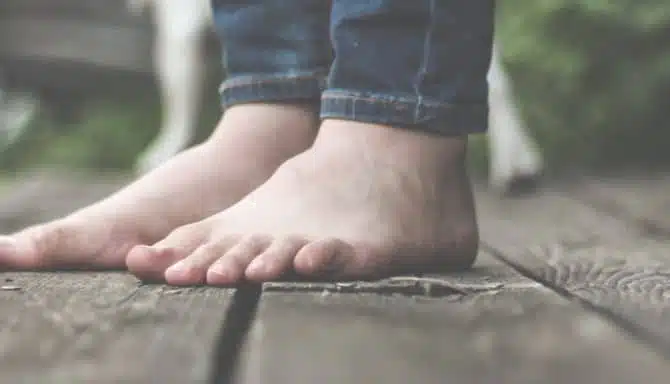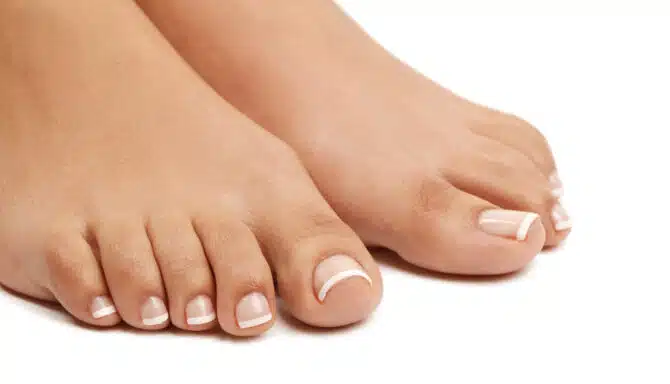Bang. Ouch. Did you hear that? That’s you stubbing your toe. A stubbed toe occurs when you least expect it; this pesky situation is bound to occur a few times a year. Even when we’re extra careful, it seems to happen on occasion. But you can stub your toe outside the house as well, whether it’s playing sports, or at work.
The pain is intense, your toe swells like a balloon, and the area is throbbing. What do you do? One thing’s for sure: you need to do something. Even it that means intentionally doing nothing at all.
What Classifies as a Stubbed Toe?
A stubbed toe occurs any time you jam your toe against another object. This is a trauma injury, meaning it’s a physical injury of sudden onset and severity. It happens at once. Whereas other foot conditions develop over time, like bunions, hallux rigidus, or plantar fasciitis.
Alternatively, you may stub your toe on itself. If you’re ever run around in sand, or barefoot on grass, you know what we mean. The latter is often known as turf toe, a sprain of the big toe joint resulting from injury during sports activities.
When you stub your toe, any one of the following may occur:
- Throbbing toe pain
- Swelling
- Bruising (including discolouration)
- Bleeding from the nail bed (subungual hematoma)
- Trouble walking
- Trouble comfortably putting on a shoe, or socks
There’s actually a reason why stubbed toes hurt so much. According to one doctor, it’s the nerve receptors that are damaged when you stub your toe. “Each digit has two nerves, one on either side,” Dr. Botek says. “So no matter where you hit your toe or how you stub it, it’s going to affect a nerve impulse from your toe to your brain.”
How Long Does it Take For a Stubbed Toe to Heal?
Recovery can vary depending on the severity of the injury. A hard and fast rule regardless of the extent of the injury is to follow the RICE method. RICE stands for:
- Rest. The one thing you should always do is the absence of doing anything at all. Take a rest. Take weight off your foot and sit down immediately. Avoid any strenuous exercise until the swelling and throbbing has subsided.
- Ice. Use an ice pack (no direct contact with actual ice to the skin) to reduce swelling. This should also help with pain management.
- Compression. Wrap your toe if necessary with a compression garment. This will help stabilize your toe, and reduce swelling.
- Elevation. Elevate your feet to above your heart, whether that’s lying down or sitting down with your feet up on an object. This will encourage blood flow and help reduce swelling.
Anti-inflammatories can also help lessen the pain, and reduce swelling. Additionally, you can use medical tape or bandage to wrap the affected toe with the neighbouring joint. This brace will help stabilize the toe (courtesy of its neighbour), and can prevent further damage through aggravation.
There are a few changes you can make around the house to make stubbed toes less likely. These include:
- Avoid walking barefoot
- Be mindful of “stub-worthy” objects, such as bed frames, floor boards, and chair legs, especially when you’re in a rush. Alternatively, cover the bottoms of the objects with something that would physically block you from stubbing your toe
- Wear closed-toe shoes
- Wear protective shoes if on the job site
If your toe is broken, a realistic timeline for recovery is 4-6 weeks. Whereas with a sprain, or a minor strain, you may look at a few days to 1 week of recovery time. With a sprain, or strain, the immediate pain from the stubbed toe should dissipate rather quick, and transition to a dull pain or feeling. With a break, you may experience uncomfortable pain for days, even weeks, as the bone heals.
Is My Toe Broken or Stubbed?
This is tricky because self-diagnosing a stubbed toe is difficult. There’s only one way to know for sure: get X-rays. That’s not always necessary however since non-fractures often heal on their own. Sprains, fractures, and contusions can all feel similar in some ways. The real indicator is in the length of experiencing symptoms. If pain and symptoms don’t subside within a few minutes, hours, or even days, then the likelihood of a fracture is high. After all, there are 14 bones in the toe. With sprains, and non-fractures, pain typically subsides, and will continue to do so if you don’t re-aggravate the injury. With a fracture, bone only heals so fast, so you may experience pain for a few days, if not weeks. Watch for severe discolouration, pain after a few hours, or a clear sign of a break if you’re unsure of whether it’s a fracture or a sprain.
Can You Break Your Foot by Stubbing Your Toe?
Yes, you can break a bone by stubbing your toe. In most cases, treatment for a broken toe and sprained toe are the same. The time for recovery is lengthened, and you will need to avoid strenuous activity or pressure to it. Your doctor may advise (or you can do this yourself) to use tape on a neighbouring toe to create a loose splint.
It’s not just your toe that’s affected when you smash it. There’s also the skin, and the toenail that you’ll want to monitor.
We’ve Got You Covered!
We’re confident in our ability to help inform you and solve your concern with the least amount of discomfort as possible. Got a question about your toes? Call us for whatever concerns you have, whether that’s a quick question or booking an appointment, and we’d be happy to point you in the right direction!
Call us at 416-769-3338 or Click Above to Book Your Assessment Today!














